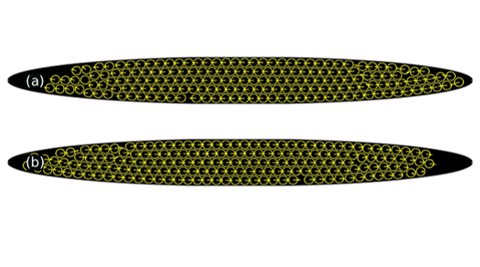Simulationsmethoden für komplexe Fluide und weiche Materialien
Das Projekt soll die numerischen und algorithmischen Grundlagen und Methoden erarbeiten, die es ermöglichen, komplexe (nicht-Newtonische) und aktive weiche Materialien zu simulieren. Beispiele für derartige Materialien sind Joghurt, Rasierschaum, aber auch Zellen und Organe. Diese Materialien sind der weitgehend unerforschten Grenze zwischen fest und flüssig zuzuordnen. Das Spannungs-Deformationsverhalten ist nichtlinear, Kräfte können intern unter Energieverbrauch erzeugt werden, zudem können z. B. durch Verdichtung Phasenübergänge zwischen "mehr flüssig" und "mehr fest" auftreten.
Hieraus ergeben sich unbeantwortete Forschungsfragen von hoher praktischer Relevanz in der Nahrungsmittel- und Chemieindustrie, aber auch in der Medizin und Biomechanik. Die physikalischen Grundgesetze und die mathematischen Gleichungen nach denen sich komplexe Fluide verhalten sind heute gut erforscht, ein Beispiel liefert die Theorie der aktiven polaren Gele. Bislang existieren jedoch keine verlässlichen Simulationsverfahren, welche diese Gleichungen in drei Dimensionen effizient lösen.
Projektlaufzeit: 10/2015 - 09/2018
Drittmittelgeber: ESF-Nachwuchsforschergruppe "Computer-Simulationen für das Materialdesign" (CoSiMa) vorgeschlagen vom Dresden Center for Computational Materials Science (DCMS), welches vom support-the-best Programm im Rahmen des Zukunfskonzeptes der TU Dresden gefördert wird
